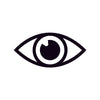It was thought long ago that under-correction of the full distance prescription would inhibit progression. This has now been shown to be untrue and myopic children are to be given their full distance prescription. But it has been proven that the use of bifocals and multifocal spectacles has a myopia control effect, albeit not strong.
Now one of the prominent theories in myopia control is creation of peripheral retinal defocus. This is achieved with the use of unique progressive lenses (Zeiss Myovision) and some brands of soft multifocal contact lenses. But a limitation of the soft contact lenses is limited lens power availability. Another way to achieve peripheral defocus is the use of specialized rigid contact lenses. This is called Ortho – K and it is when you use a lens to induce a change in the corneal topography (curve and shape). The main use of Ortho – K is clear unaided vision after lens wear overnight and it is now also prominently used effectively to control myopia. But it is still unclear how it controls it in the long term.
The final and seemingly most effective way is the use of a pharmaceutical eye drop called atropine in children. There are ocular side effects including cycloplegia (paralysing the focusing muscles of the eye), cycloplegia (large pupils), allergic conjunctivitis and dermatitis around the eyelids. Systemic side effects can occur and they include flushed skin, restless ness and delirium.
Essentially together with more research and patient education, better myopia control results can be achieved moving forward.
By Stephen K.
Optometrist at 1001 Optical.
Need an eye test? BOOK NOW


